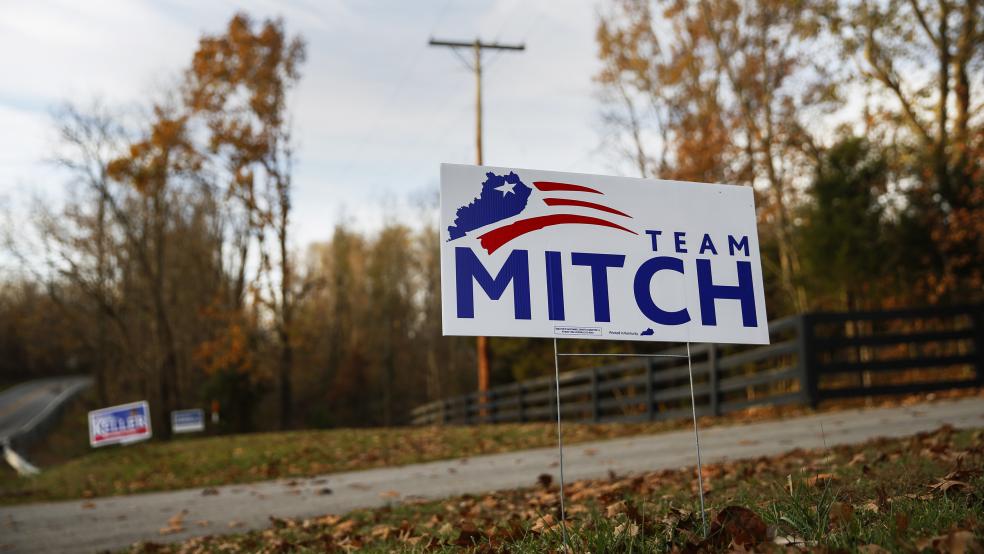Two years ago, GOP strategist Karl Rove spent $103 million on ads attacking opponents of Mitt Romney and eight Republican Senate candidates. But the strategy failed when Rove’s super Pac, American Crossroads, suffered a humiliating setback and came up empty handed.
A study by the Sunlight Foundation, a watchdog group that tracks political spending, said that Rove’s group had a success rate of just 1 percent – one of the lowest returns on investment of any outside spending group in the 2012 campaign cycle.
Related: Election 2014: The Most Expensive Midterms Ever (Infographic)
Things looked a lot better Tuesday night for American Cross Roads, the U.S. Chamber of Commerce and scores of other conservative advocacy groups and super PACS as the Republicans swept to power and elected at least ten fresh GOP faces to the Senate while expanding the GOP majority in the House.
Rove’s group led the conservative rebound according to a new Sunlight Foundation study, scoring a 96 percent election success rate in return for $26 million in campaign contributions, while the Chamber of Commerce reaped an 80 percent return on its investment of $20.2 million in GOP campaigns.
Others that savored a big night for the GOP: the National Republican Congressional Committee, which spent $63.1 million and had a 71 percent success rate in electing candidates; the National Republican Senatorial Committee, which spent $37.7 million and received a 94 percent rate of return, and the National Rifle Association of America Political Victory Fund, which spent $12.2 million and reaped a 95 percent success rate.
By contrast, Democratic groups were licking their wounds after pouring hundreds of millions of dollars into lost causes in trying to retain a Democratic majority in the Senate.
Tom Steyer, the billionaire San Francisco financier and his group, Nextgen Climate Action, spent $17.8 million on behalf of Democratic Senate and gubernatorial candidates who share his concern about global warming and oppose the Keystone XL pipeline project. According to Sunlight, Steyer had just a 32 percent rate of success.
The majority of environmentally friendly candidates Steyer’s group backed most heavily, such as Sen. Mark Udall in Colorado and Rep. Bruce Braley in the Iowa Senate race, were defeated – as was Democrat Charlie Crist in the Florida governor’s contest.
Related: GOP Wave Election Leaves Obama Friendless in D.C
Not surprisingly, the results were pretty much the same for others allied with the Democratic Party: The Senate Majority PAC, founded by former staffers to outgoing Senate Majority Leader Harry Reid of Nevada, and fueled by donors including Steyer and former New York Mayor Michael Bloomberg, also received a sorry return on investment score of just 9 percent.
"Unprecedented levels of spending by conservative dark money groups fueled this historic and insurmountable electoral wave," explained Ty Matsdorf, a spokesman for Senate Majority PAC, according to The Washington Post. In almost every Senate race, Republican outside groups outspent Democratic outside groups — nearly doubling overall Democratic spending."
Meanwhile, the Democratic Senatorial Campaign Committee, arguably the most hang-dog political operation in Washington today, spent $51.8 million trying to help a dozen or more incumbent senators hang on to their seats, but ended up with just a 17 percent rate of return on their investments.
Democrats lost seats in Arkansas, Colorado, Iowa, Montana, North Carolina, South Dakota and West Virginia, and could lose two more in Louisiana and Alaska. The one bright spot of election night came when Democratic Sen. Jeanne Shaheen of New Hampshire fended off a vigorous challenge from Republican Scott Brown.
Related: Obama Indicates Some Room for Compromise with GOP
The crucial mid-term election generated a record $4 billion of campaign spending, according to estimates. GOP outside groups held a slight edge over the Democrats in overall campaign fundraising and spending, and they made the most of it.
“In 2014, conservatives turned the ship around, drubbing their liberal rivals in a year in which independent groups on both sides dropped unprecedented amounts of money,” Sunlight analysts Jacob Fenton and Peter Olsen-Phillips wrote in their report.
Top Reads From The Fiscal Times


